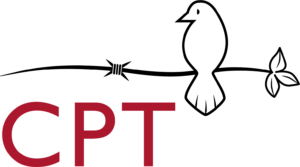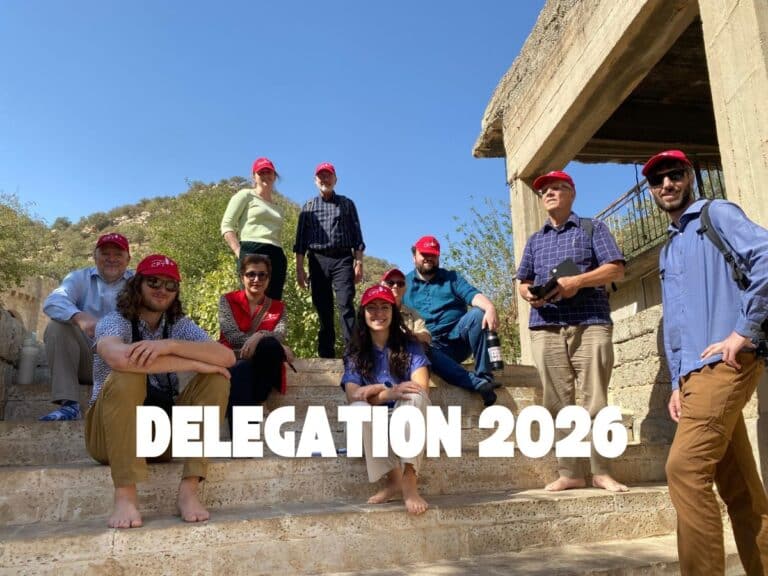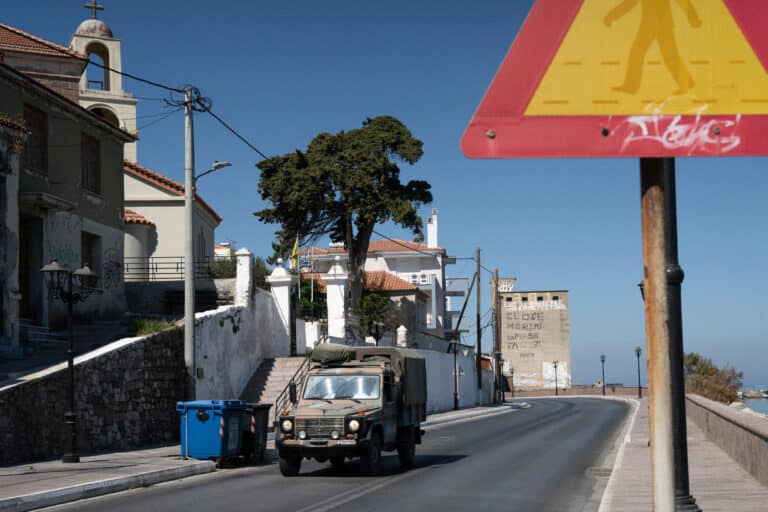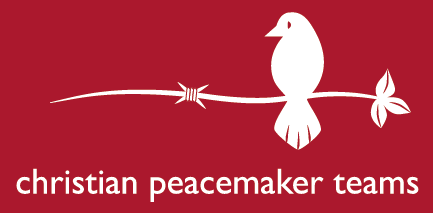After nearly forty years of on the ground experience in nonviolent-unarmed-civilian-accompaniment, two things are certain: the struggle for justice is slow, and revolution needs solidarity. We cannot underestimate the strength and fortitude of profit makers of violence and inequality; they are funded and organized and have governments on their side. Our strength is in our patient resistance and our commitment to one another.
A few years ago, during my visit to a Zapatista community in Chiapas, Mexico, I was enchanted by their choice of using the snail in a spiral shell as their primary symbol of resistance. This crawling creature whose belly is connected to the earth speaks of humility and modesty and signals a revolution that may start like lightning but is realized slowly, patiently, and steadily. A mural on a school wall depicted the snail with a spiraling shell wearing a black ski mask and a speech bubble that read, “lento, pero avanzo,” which translates, “I’m slow, but I’m moving forward.” The work of justice is not only making sure wrongs are acknowledged and made right, but it also hopes toward a system change where, according to the Zapatistas, “there was no need for armies; peace, justice and liberty were so common that no one talked about them as far-off concepts, but as things such as bread, birds, air, water, like book and voice.” Rebecca Solnit describes the symbology of the snail: “Their revolution spirals outward and backward, away from some of the colossal mistakes of capitalism’s savage alienation, industrialism’s regimentation, and toward old ways and small things; it also spirals inward via new words and new thoughts.” To embrace the work of social justice is to reorient ourselves through unlearning and imagination.
2025 is not going to be an easy year for our partners. The political climate globally is polarized, the powerful have claimed god on their side, and the gun is pointed toward the vulnerable; therefore, reimagining the possible cannot be done in isolation but only in solidarity and community. Solidarity is a process of showing up where one gives but also receives. For example, the work of unarmed civilian accompaniment —as CPTers accompanying communities or persons at risk— reveals our assumptions and privileges that often eat away solidarity. Like the snail’s shell, solidarity is an “outward and backward” movement, building community in our journey toward social justice.
If this revolution is going to come around, we cannot resist alone; we have strength in solidarity. Spokesperson for the Zapatista, Marcos, reminds us, “We are nothing if we walk alone; we are everything when we walk together in step with other dignified feet.”
Happy New Year.




